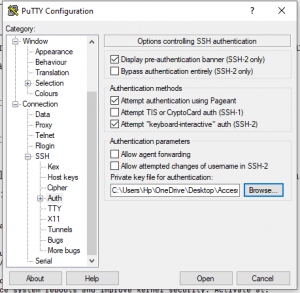

Open a terminal / command line and change directories to where your PEM file is. The step is going to require the use of the PEM file you downloaded. In this step you’re going to create an SSH Tunnel and it’s going to require the use of a terminal (Mac) / command line (Windows). Now you have your application’s password. In the terminal, highlight the password and click the clipboard icon. This password give you access toįTP, PHPMYADMIN and the WordPress Admin.

Next you will see your application’s password.

Sudo /opt/bitnami/apps/wordpress/bnconfig –disable_banner 1Īfter you have pasted this command into the window. With the clipboard window open, copy and paste this command into the window:Įnter this command to disable the Bitnami banner on your wordpress site. With the terminal window open, click the clipboard icon. At this point you’re using your server’s terminal. This will launch a terminal in the browser window. This will download yourĬlick the Connect using SSH button. This willĪllow you access your database manager: PHPMYADMIN.In the upper right corner, click on account and then click “Create New”.Īgain, I would name your SSH Key Pair the same name as your domain name.Īfter you click create, you can click the Download link. You are creating what is called an SSH-Tunnel. The PEM file contains the necessary security credentials to allow your computer to connect to Amazon’s servers. Step 3 – Create SSH Keys & Download PEM File.You could call it whatever you want but it’s easier if you keep instance name and the IP name coupled together. In this section you will select the instance you just created and attach the IP to the instance and you give your IP address a name: Again, I am choosing to use my domain name but this time I am using the full name with. My domain name for easy reference but you can use whatever you want. Select the plan you want and give your instance a name. This means you should know how to export / import your database, connect with FTP to upload your files to the web host and everything else that goes along with setting up a WordPress website.

It also assumes you have experience manually moving a WordPress site from your localhost to a remote web host like GoDaddy, Hostgator, WPEngine, etc…. The following steps assume you’ve already signed up for an Amazon Lightsail account. Not too long ago I was in the same position and want to share my experience with moving a client’s local development project you’ve been working on to Lightsail. So you’ve been considering Amazon Lightsail. If you’re like me, you’re always looking for better, faster, web hosting and you don’t want to pay for expensive managed WordPress hosting like WP Engine and Siteground. Amazon LightSail + WordPress Deployment – The Definitive Guide


 0 kommentar(er)
0 kommentar(er)
